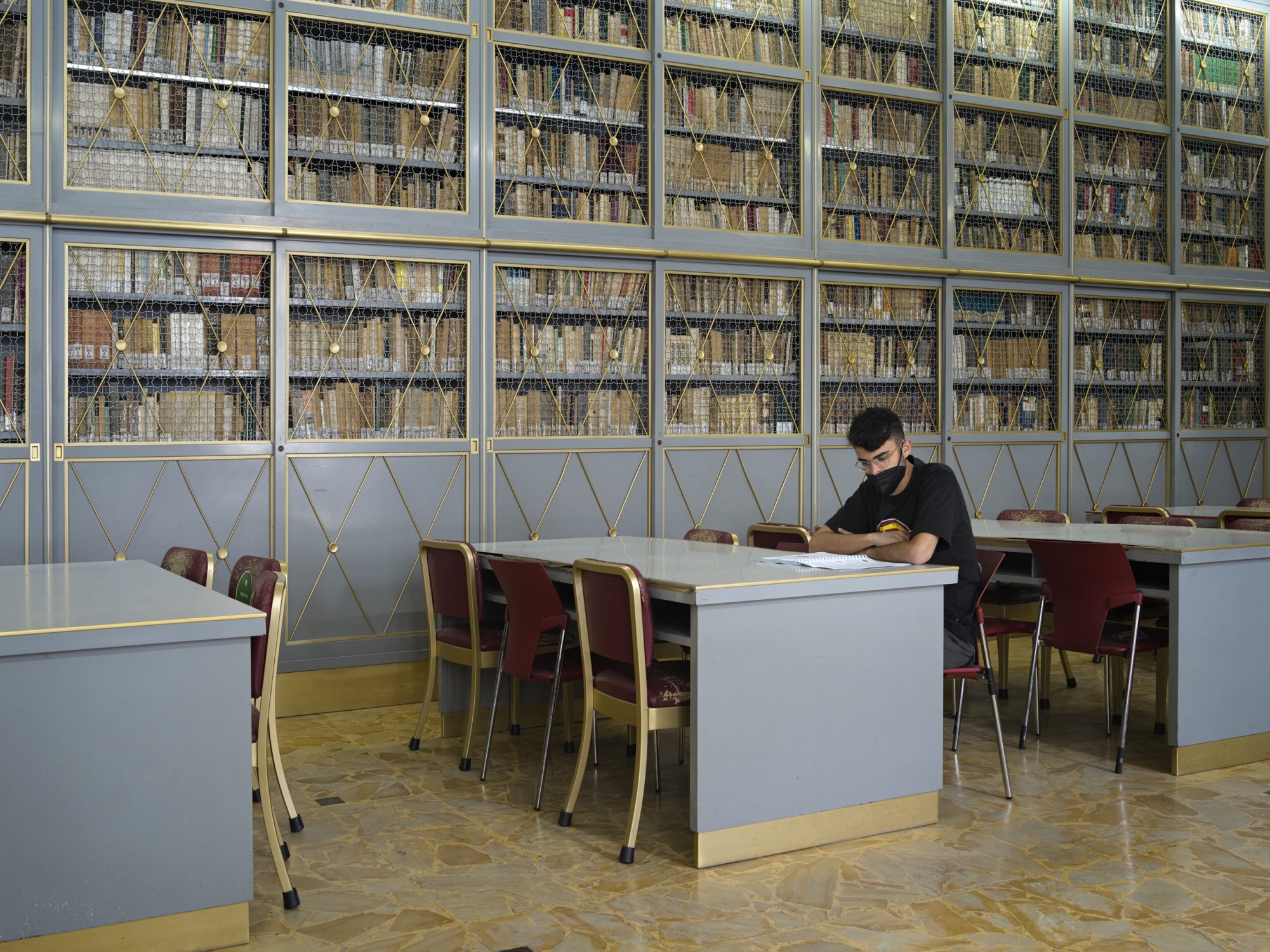
The girl in the yellow sweater is both a visitor to the former palace of the last king of Italy and a student at the Department of Agricultural Sciences of the University of Naples. We visited this oldest agricultural university in Europe for a meeting with Professor Stefano Mazzoleni, to hear about ‘a new scenario for natural biocontrol’, controlling harmful species by means of extracellular self-DNA exposure. In a lecture lasting less than ten minutes the professor explained it all to us in a way we could understand.

“the DNA that is in the environment through the organic matter cycle can be good if it's not self and not good if it's self. And this creates a lot of nice consequences in agricultural management and in understanding the cycle of life.”
Prof. Stefano Mazzoleni
University of Naples Federico II
We meet Stefano in the garden of the university, the former summer palace of King Charles of Naples and his wife Maria Amalia of Saxony.
Charles and Maria felt drawn to the rolling landscape in the Bay of Naples and had their summer palace built there.
After the unification of Italy, the government in Rome decided that part of the Royal Palace of Portici should serve as the agricultural faculty of the University of Naples Federico II. The faculty extended the botanical collection in the castle grounds, and it now has more than 400 species from the deserts of Africa and America.
After this brief history lesson, the professor takes us on a tour of the former royal palace, which has now served as an agricultural university for more than 150 years.

The tour is a journey through time against the background of past glories and full of optimism for the future. We look at the huge collection of preserved butterflies and other insects and stuffed birds and mammals in old oak glass-fronted cases that stand patiently waiting for a place in the Sito Reale di Portici, the museum that is under construction and of which Stefano is the director.

We note the contrast between the scholarship of the professors in the stately portraits and the cheerful optimism of the students carrying out research here. The contrast between the library, with leather-bound volumes containing agricultural knowledge hundreds of years old, and the students everywhere with their phones and laptops….

Between the old ceilings, blackened by experiments in biology and chemistry, with the first microscope kept as an artefact by the museum, and the state-of-the-art equipment with which students analyse their data….

Between the botanical gardens and the park, with their Roman statues and centuries-old trees, and more than 400 plant species from the deserts of Africa and America.
Being young and studying here is a privilege.

The tour ends in Stefano’s study, which, like the rest of the building, is a mixture of order and chaos, the biotope of a professor who made an important discovery in the field of extracellular DNA and its application.
Abstract
The search for new products against pathogens, parasites and infesting species, implies huge scientific and economic efforts. Traditional approaches are based on random screening procedures searching for bioactive compounds from different sources. However, the development of new products, in most cases, has been limited by side effects on biological systems other than the target, environmental contamination, and by the induction of resistance in the organisms to be controlled. Consequently, despite the major and increasing efforts on research of new products in both agriculture and medicine, the rate of approval is significantly decreased in recent years.
The recent discovery of the inhibitory effect of extra cellular self-DNA has opened new perspectives for highly species-specific inhibitory product for biological control, with relevant economic and environmental advantages.
Stefano Mazzoleni
Lab of Applied Ecology and System Dynamics
Dept. Agricultural Sciences,
University of Naples Federico II
We ask Stefano to tell us, in front of the camera, about his research and its significance, but Stefano regards the university’s park with its ancient trees and hundreds of species as his natural habitat and a more suitable decor for a mini-lecture about No-Self: A New Scenario for Natural Biocontrol: Controlling harmful species by their extracellular self-DNA
We have selected another two stories that might inspire you.


